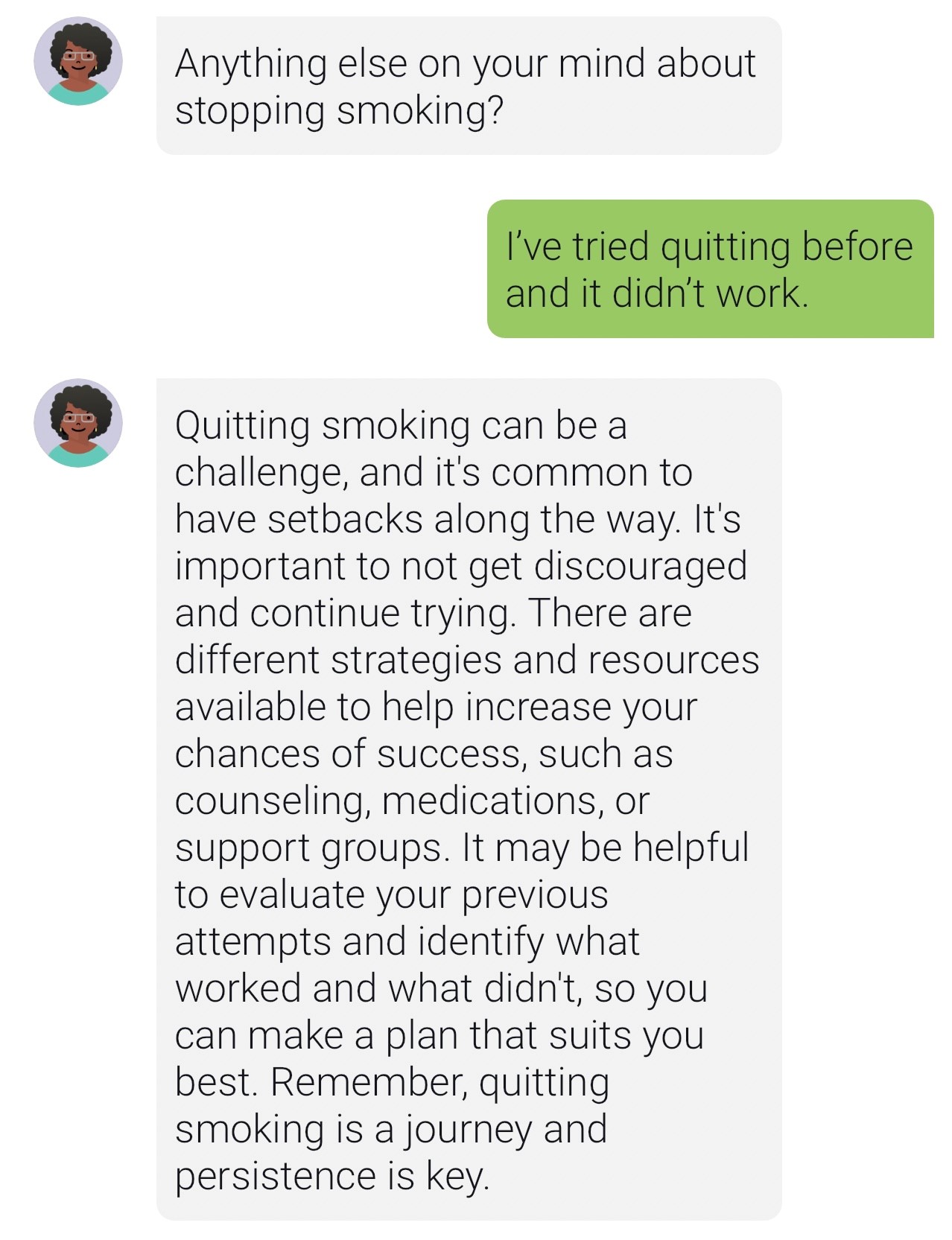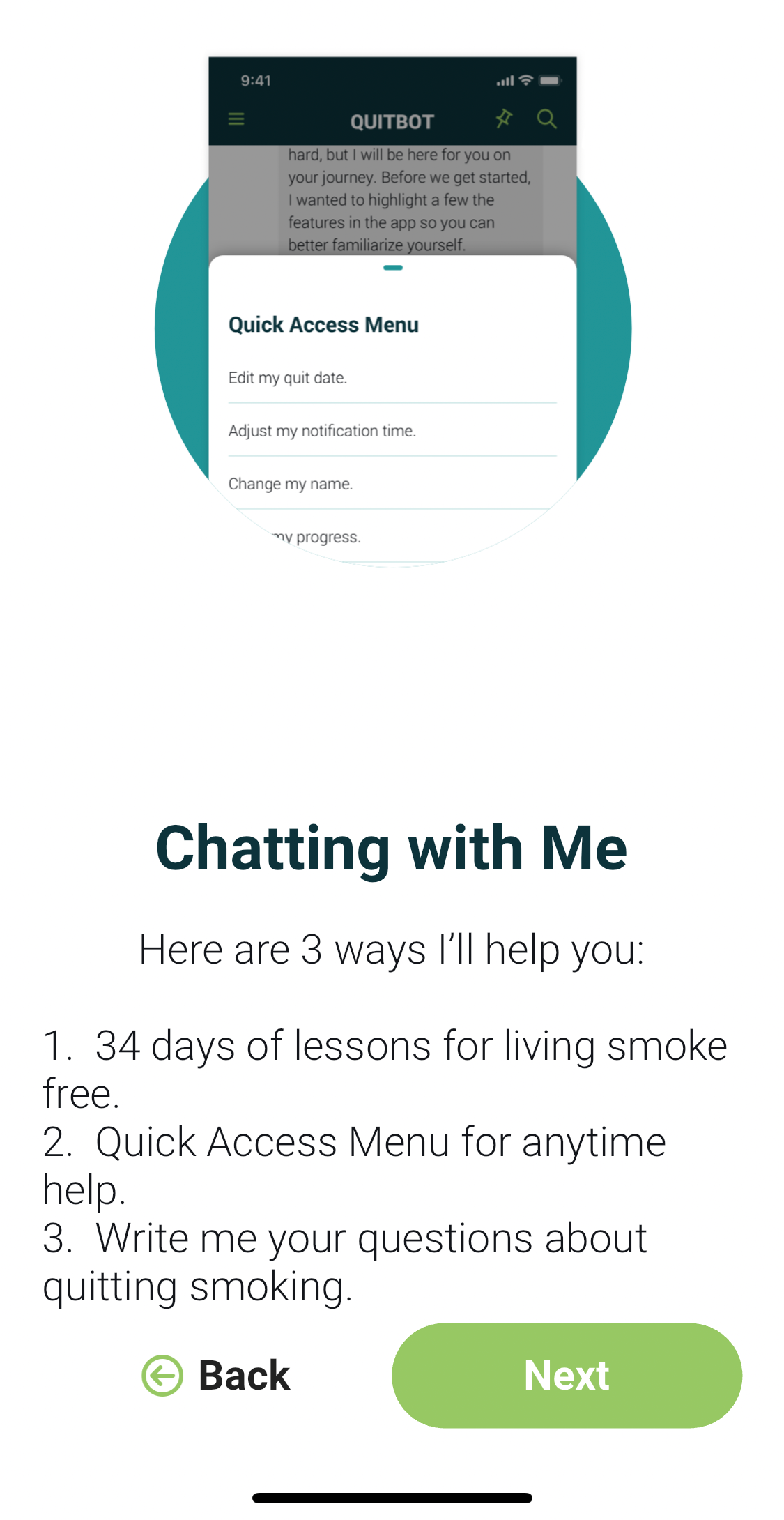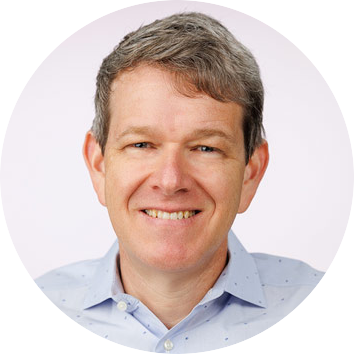Who created QuitBot?

Dr. Jonathan Bricker has spent his career creating innovative new ways to help people quit smoking and lose weight. For over two decades, he has developed behavior change programs delivered in person, by telephone, on websites, and on smartphone apps.
Four years ago, he set out to do something different. One of the key insights from behavior change research is the power of the therapeutic conversation. These conversations help the user feel heard, connected, and cared for. Indeed, these bonds with a care provider are basis for making change.
Advances in large language modelling, machine learning, natural language processing (NLP), and cloud computing are now making it possible to create and widely distribute conversational tools commonly known as “chatbots” which are computer-powered digital coaches designed to form long-term social-emotional connections with users through conversations.
This new conversational technology spawned the idea of QuitBot. In his initial planning of the bot, a chance meeting with a Microsoft computer scientist led him to partner with their AI for Good Lab.
AI for Good joined Dr. Bricker’s team to power QuitBot’s chatting abilities based on its use of a customized and specially trained version of ChatGPT, creating and testing it on a training bank of 11,000 user questions and clinician answers.
A lot of times, that’s where the story ends: the researcher develops a program, but it doesn’t make it out into the world for public use.
Not this time. QuitBot is now freely available to anyone who wants to quit smoking. We are very grateful to Trevor Noah for taking an interest in QuitBot, interviewing Dr. Bricker about the QuitBot story on episode 4 of The Prompt, and getting the word out!

How does QuitBot work?

QuitBot is a comprehensive quit smoking program of 42 days of 3 to 5-minute focused conversations over two phases: 14 days pre-quit date and 28 days post-quit date covering topics ranging from motivations to quit, setting a quit date, choosing FDA-approved medications, identifying and coping with a wide range of triggers, and recovering from lapses or relapses.
QuitBot uses a type of AI called Large Language Model (LLM) natural language processing (NLP) cloud computing technology and the tenets of effective coaching to create a bond with its users. QuitBot has an avatar persona called Ellen that will check in a couple of times a day. Ellen will offer praise and encouragement, share charts that show your progress and, like any good coach, teach you skills to stay motivated or deal with cravings.
Working with Ellen in the app is just like using any familiar messaging app. People type questions and responses to Ellen in natural language just like any other messaging system. Each day Ellen asks the user for a quick update followed by a guided conversation topic for the day. The interactions with these guided topics steer the conversation for the rest of the day and future days. People can freely ask questions they have on smoking-related topics.
How is QuitBot different from other quit smoking programs?
Unlike a text messaging program that has uniform messages and communication that’s mostly one-way, or a telephone quitline that’s only available at certain hours, QuitBot is responsive to what individual users need, and available at any time they need. It’s evidence-based quitting coaching, delivered with the latest AI technology.
While there are chatbots that have menu or button-based responses, QuitBot is capable of understanding users’ questions about quitting smoking and respond with clinically-proven answers. This key feature makes the experience more engaging and meaningful for the user.




